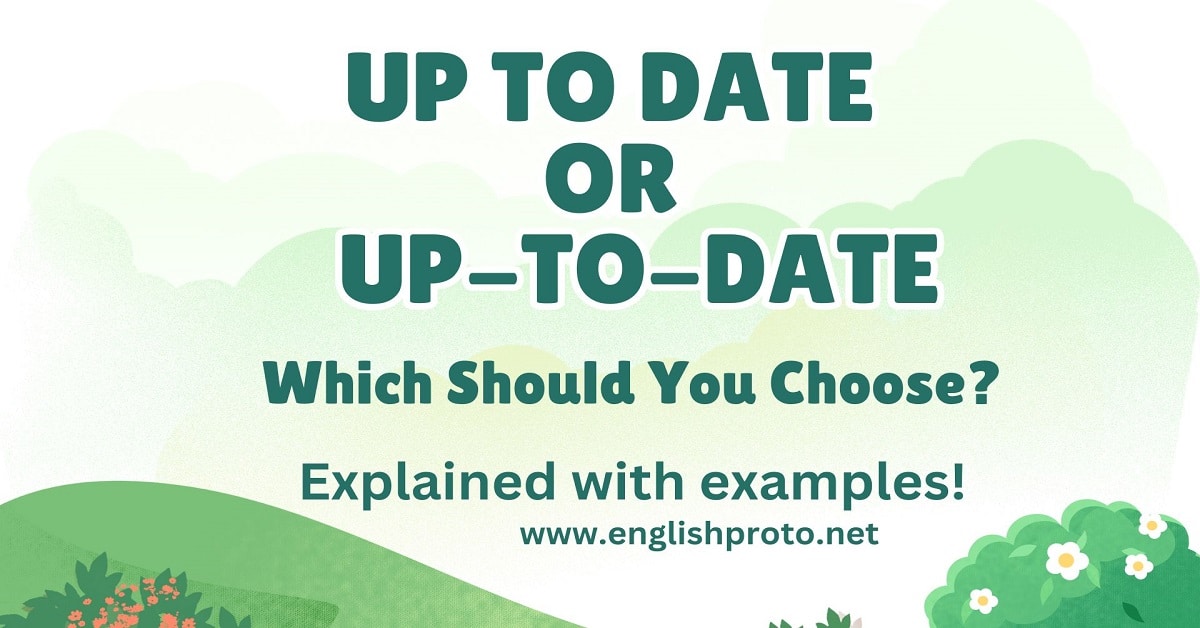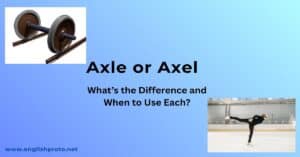Up to Date or Up-to-Date: Which Should You Choose? It’s a small detail, but getting it wrong can make your writing look sloppy or unprofessional.
Whether you’re drafting an email, writing a report, or polishing a resume, knowing when to use each version can set you apart as a polished communicator.
If you’ve ever paused and wondered, “Is it up to date or up-to-date?” you’re not alone. Many people get tripped up by this seemingly tiny difference. Don’t worry! In this article, we’ll clear up the confusion once and for all, making sure you’re always confident in your choice.
Quick Summary
The phrases “up to date” and “up-to-date” have distinct grammatical roles:
- “Up to date” (without hyphens) is used as an adverbial phrase. It describes the state of being informed, current, or updated.
- “Up-to-date” (with hyphens) functions as an adjective. It is used to describe a noun that is modern, current, or updated.
Key Takeaways:
- Use “up to date” when it follows a verb or refers to the state of being current.
- Example: The report is up to date.
- Use “up-to-date” when it modifies a noun.
- Example: We need an up-to-date report.
- The hyphenation rule clarifies the term’s grammatical role and prevents ambiguity.
Now that we have a quick overview, let’s delve deeper into why this distinction is important and how to use each version correctly.
Reasons for Confusion
Many people mix up “up to date” and “up-to-date” because:
- Similar Pronunciation: Both terms sound identical when spoken, making the difference invisible in verbal communication.
- Hyphenation Rules Are Tricky: Hyphens often confuse writers since not all compound words or phrases require them.
- Casual Writing Norms: In informal settings, people tend to skip hyphens altogether, leading to errors in formal or professional writing.
- Regional Variations: English usage varies slightly between countries, such as the United States, the United Kingdom, and Australia. These differences can add to the confusion.
- Overgeneralization: Some assume that if a hyphen works in one context, it will work in all contexts, which isn’t true.
Detailed Explanation
The correct usage of “up to date” versus “up-to-date” depends on their function in a sentence. Let’s break it down for clarity:
1. Up to Date (Adverbial Phrase)
When used as an adverbial phrase, “up to date” describes the state of being current, informed, or up-to-speed. It typically follows linking verbs like is, are, seems, or remains.
- Function: Adverbial (describes the action or state).
- Placement: Usually follows the verb in the sentence.
- Examples:
- The software is up to date.
- Are your medical records up to date?
- She worked hard to bring the team up to date on the project.
In these examples, the phrase does not modify a noun; instead, it complements the verb or indicates the state of something.
2. Up-to-Date (Adjective)
When used as an adjective, “up-to-date” modifies a noun. The hyphenated form signals that the phrase is working together as a single descriptor.
- Function: Adjective (modifies a noun).
- Placement: Before the noun it modifies.
- Examples:
- We need an up-to-date schedule.
- The textbook is up-to-date with the latest research.
- The company prides itself on offering up-to-date solutions.
Without the hyphens, the meaning could become unclear or awkward. For example, “an up to date report” may confuse readers because “up to date” appears disconnected from the noun it describes.
⚡ Quick Tip:
If you’re unsure which form to use, try replacing the phrase with another adjective (e.g., modern or current). If it fits, use “up-to-date.” If not, use “up to date.”
Common Errors
Misusing “up to date” and “up-to-date” is a common mistake, even among experienced writers. Let’s look at some incorrect variations and why they should be avoided:
| Incorrect Usage | Why It’s Incorrect | Correct Form |
|---|---|---|
| The document is up-to-date. | Hyphenated form is incorrect when used as an adverbial phrase. | The document is up to date. |
| We need an up to date report. | Missing hyphens in the adjective form creates ambiguity. | We need an up-to-date report. |
| Her knowledge is up-to date. | Inconsistent hyphenation leads to grammatical errors. | Her knowledge is up to date. |
| Please bring the system up to-date. | Incorrect hyphenation disrupts readability and breaks the grammar rules. | Please bring the system up to date. |
The table above highlights how subtle errors in hyphenation can confuse readers or make your writing appear unpolished.
Synonyms or Alternatives
If you want to avoid using “up to date” or “up-to-date” repeatedly, consider using the following synonyms or alternative phrases, depending on the context:
| Context | Alternatives |
|---|---|
| Adverbial Phrase | Current, informed, modernized |
| Adjective | Contemporary, updated, modern |
For example:
- The software is current. (instead of up to date)
- We need a modern report. (instead of an up-to-date report)
While these synonyms work in many cases, be mindful of subtle differences in meaning.
Examples in Sentences
Here are additional examples to solidify your understanding:
- Up to Date (Adverbial Phrase):
- The website is up to date with the latest trends.
- Are you up to date on the new company policies?
- It’s important to stay up to date with industry developments.
- Up-to-Date (Adjective):
- The up-to-date guidebook is a must-have for travelers.
- She gave us an up-to-date overview of the market.
- An up-to-date system ensures better security.
Origins and History
The term “up to date” has its roots in 19th-century English, when it was used to describe something modern or current in time. Over time, as compound adjectives became more common in English, the hyphenated form “up-to-date” emerged to modify nouns more effectively.
The hyphenation rules were formalized as English grammar evolved, particularly in the late 19th and early 20th centuries, to improve clarity and avoid ambiguity. Today, the distinction between these two forms is an essential part of modern grammar.
Conclusion
Understanding the difference between “up to date” and “up-to-date” is crucial for clear and professional writing. While the two forms may seem interchangeable, their roles in a sentence are distinct. The key is to remember:
- Use “up to date” as an adverbial phrase to describe a state of being current.
- Use “up-to-date” as an adjective to modify a noun.
By mastering this distinction, you can ensure your writing is both grammatically correct and easy to understand. Next time you encounter these terms, take a moment to think about their role in the sentence, you’ll always get it right!
Now that you’re up to date on this topic, you’re ready to apply it in your own writing. Happy writing!



